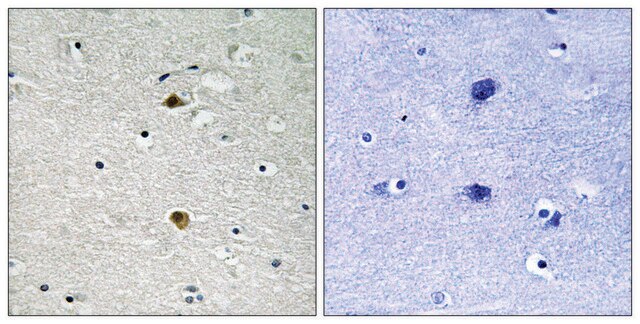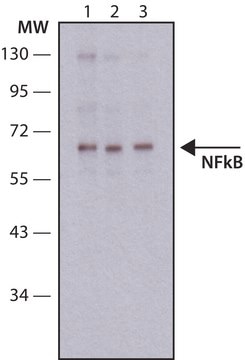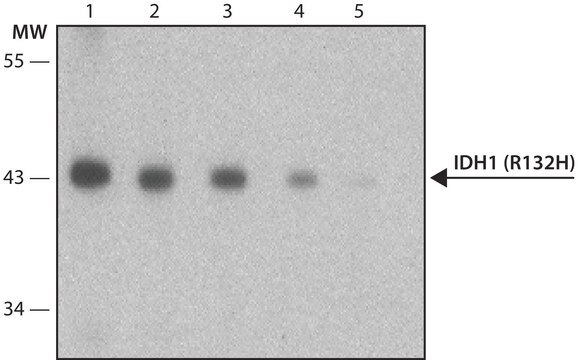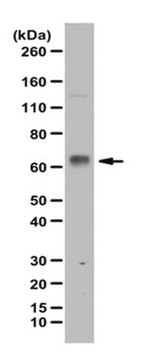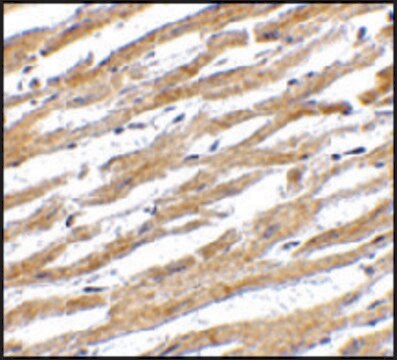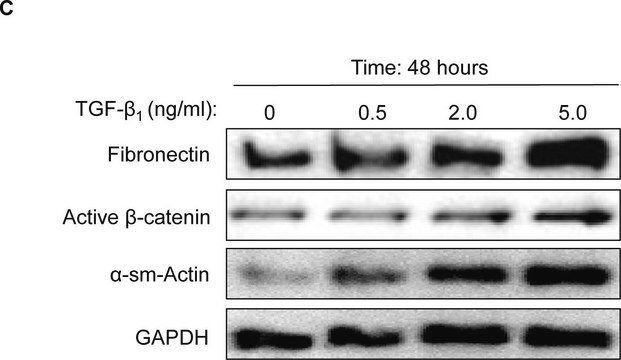06-418
Anti-NFκB p65 Antibody, CT
Upstate®, from rabbit
Synonym(s):
Nuclear factor NF-kappa-B p65 subunit, v-rel avian reticuloendotheliosis viral oncogene homolog A (nuclear
factor of kappa light polypeptide gene enhancer in B-cells 3 (p65)), v-rel reticuloendotheliosis viral oncogene homolog A (avian), v-rel r
About This Item
Recommended Products
biological source
rabbit
Quality Level
antibody form
purified antibody
antibody product type
primary antibodies
clone
polyclonal
species reactivity
mouse, rat, human
manufacturer/tradename
Upstate®
technique(s)
electrophoretic mobility shift assay: suitable
immunoprecipitation (IP): suitable
western blot: suitable
isotype
IgG
NCBI accession no.
UniProt accession no.
shipped in
dry ice
wet ice
target post-translational modification
unmodified
Gene Information
human ... NFKB1(4790)
General description
Specificity
Immunogen
Application
4 µg of a previous lot immunoprecipitated NFκB p65 from 500 μg of a human A431 carcinoma cell lysate.
Epigenetics & Nuclear Function
Transcription Factors
Quality
Western Blot Analysis:
0.5-2 µg/mL of this lot detected NFkB p65 in RIPA lysates from A431 cells.
Target description
Linkage
Physical form
Storage and Stability
Handling Recommendations:
Upon receipt, and prior to removing the cap, centrifuge the vial and gently mix the solution. Aliquot into microcentrifuge tubes and store at -20°C. Avoid repeated freeze/thaw cycles, which may damage IgG and affect product performance. Note: Variability in freezer temperatures below -20°C may cause glycerolcontaining solutions to become frozen during storage.
Analysis Note
Positive Antigen Control: Catalog #12-301, non-stimulated A431 cell lysate. Add 2.5µL of 2-mercaptoethanol/100µL of lysate and boil for 5 minutes to reduce the preparation. Load 20µg of reduced lysate per lane for minigels.
Other Notes
Legal Information
Disclaimer
Not finding the right product?
Try our Product Selector Tool.
recommended
Storage Class
10 - Combustible liquids
wgk_germany
WGK 1
Certificates of Analysis (COA)
Search for Certificates of Analysis (COA) by entering the products Lot/Batch Number. Lot and Batch Numbers can be found on a product’s label following the words ‘Lot’ or ‘Batch’.
Already Own This Product?
Find documentation for the products that you have recently purchased in the Document Library.
Articles
The term neurodegeneration characterizes a chronic loss of neuronal structure and function leading to progressive mental impairments.
Our team of scientists has experience in all areas of research including Life Science, Material Science, Chemical Synthesis, Chromatography, Analytical and many others.
Contact Technical Service